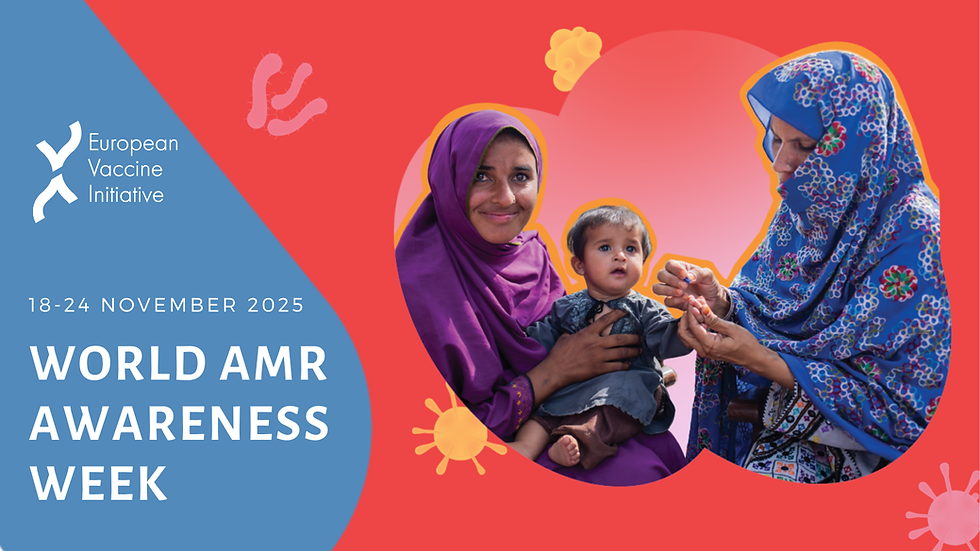A dose of teamwork against pandemics: TRANSVAC
- EVI

- Mar 31, 2022
- 3 min read
Collaboration is key to developing vaccines. Merck's article highlights why collaboration in vaccine manufacturing learning is key to accelerate our future responses and increase our manufacturing resilience and how partnering up with TRANSVAC project contributes to empower the scientific community and to build a more resilient and sustainable vaccine development ecosystem.

Excerpt from A DOSE OF TEAMWORK AGAINST PANDEMICS: TRANSVAC:
FIGHTING PANDEMICS HAND IN HAND
The COVID-19 pandemic has once again illustrated the catastrophic damage a highly infectious disease can cause globally, but it has also drawn attention to our collective capability to rapidly recognize and respond to threats. Vaccines offering protection against severe COVID-19 were developed, tested, manufactured and distributed in a timeline spanning mere months, a colossal scientific feat. Tackling the pandemic has demanded close collaboration between governments, academia, industry and other organizations to share resources, funds and knowledge. And it’s this kind of collaborative effort that will also be key to our preparedness for combating future outbreaks of pathogens with pandemic potential. TRANSVAC, led by the European Vaccine Initiative, is one of several projects designed to promote collaboration across the sphere of vaccine research, development, and manufacturing [8]. With funding from the European Union’s Horizon 2020 program, TRANSVAC’s mission is two-fold. On one hand, the project is geared towards accelerating the development of safe, effective and affordable vaccines by providing access to the necessary resources, skills and partners. Further to that objective, the TRANSVAC-DS project aims to build a sustainable vaccine infrastructure across Europe to ensure that the initiative creates a holistic and sustainable support network of partners that will continue to collaborate beyond the boundaries of TRANSVAC [9]. As Boumlic-Courtade puts it: “The ultimate goal is to ensure that the success rate for vaccines is higher than it is today — to decrease the attrition rate of vaccines and make sure that they're not just sitting in labs but will go into industry and be commercialized.” TRANSVAC unites research and government institutions, life science companies, and logistical and manufacturing expertise. In collaboration with Vaccine Formulation Institute, we joined the project in May 2019, specifically for the purpose of sharing our knowledge and experience in vaccine development processes [10]. “We are providing training courses to support the scientists and engineers of the future. Specifically, we’re aiming at bridging the gap between research and manufacturing. Our role is to train them on developing vaccine processes and implementing best practices to increase the cost-effectiveness of processes. We’re providing expertise from our own engineers and scientists and sharing some of our case studies and learnings that we’ve accumulated over the last 20 years,” said Boumlic-Courtade. “There's also the opportunity to have a closer look at our machines and systems for producing and purifying vaccines, and to understand how these are operated. They learn how to conduct small-scale process development,” she elaborated. “It’s about being pragmatic. The earlier you do the things right, the easier you can scale up.”
Check full article at https://www.merckgroup.com/en/research/science-space/envisioning-tomorrow/precision-medicine/transvac.html
TRANSVAC2 has received funding from the European Union's Horizon 2020 research and innovation program under grant agreement N° 730964.
TRANSVAC-DS has received funding from the European Union's Horizon 2020 research and innovation program under grant agreement N° 951668.
This communication reflects only the author's view and the European Commission is not responsible for any use that may be made of the information it contains.






